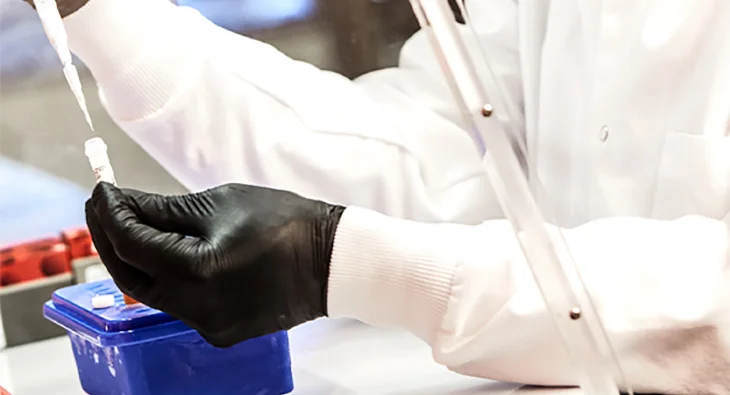Multiplex Bead Mixes Made Easy with an Excel-Based Bead Calculator
Whether you’re developing a multiplex assay for 500 different markers in one reaction or developing lower-plex assays, knowing how to make a multiplex bead mix from different types of bead stocks is critical for proper assay performance.
Unconjugated beads can be purchased as individual stocks at different concentrations of 12.5 or 2.5 million beads per mL. After coupling with different capture molecules for proteomic or genomic applications, we recommend resuspending coupled beads to a concentration of about 20 to 50 million beads/mL (<20,000 to 50,000 beads/µL), or less for proteomic vs. genomic applications respectively; see the xMAP® Cookbook for coupling protocols.
Choosing Your Beads
Whether coupling your own beads, or using MagPlex®-Avidin or MagPlex®-TAG beads, we recommend that the multiplex mix contains about 2,500 beads of each region per reaction in a user-defined volume. The Cookbook recommends that each bead region used for making a multiplex mix be at 50 or 75 beads/µL (50,000 or 75,000/mL) for different applications. As the plex of an assay increases and the volume of bead mix needed per reaction varies based on assay design, using the standard 50 or 75 beads/µL leads to errors with making a multiplex mix.
Determining Bead Stock Concentrations
When making multiplex assays, it is more efficient to have all the stocks at the same concentration and at concentrations other than the 50 or 75 beads/µL recommended. For example, in a 40-plex assay, if all the beads were at 1 million beads/mL, the same volume of each bead stock can be used to make a multiplex mix, rather than having to change the pipette volume 40 times to dispense the right amount of beads into the mix for each bead region.
No matter how capture molecules are coupled or bound to Luminex beads, the first step after attaching capture molecules is to confirm bead recovery and determine the bead concentration. The next step is to dilute all the bead preparations to the same bead concentration. While each bead preparation has a different concentration, getting them all to the same concentration can be easily calculated with the appropriate bead stock dilution calculator template.
Using the Multiplex Bead Mix Calculator
Once all of the bead stocks are adjusted to the same concentration, the bead mix calculator can be used to determine how to make a multiplex bead mix. The bead mix calculator eliminates potential calculation errors that can result from the unique needs of each experiment, including a varying number of bead regions per reaction (plex), final bead concentration of all the coupled bead stocks, and the specific volume of bead mix needed for each reaction. When using these variable parameters above certain plexes, there are different points where a concentration step will be needed to correctly make a multiplex mix. The bead mix calculator can indicate if concentrating is needed or not, and can let you know if you have enough beads to make a multiplex mix.
Instructions on how to use these workbooks can be found in this video:
Related Content
Precision Coupling with Molar Amounts of Protein [Blog]
Getting Started with xMAP® Technology [Video]
Browse 1,200+ Partner Kits with xMAP® Kit Finder [Online Tool]
xMAP® Cookbook to Design Your Own Assays [Download]
View the xMAP Multiplexing Blog [Blog]

